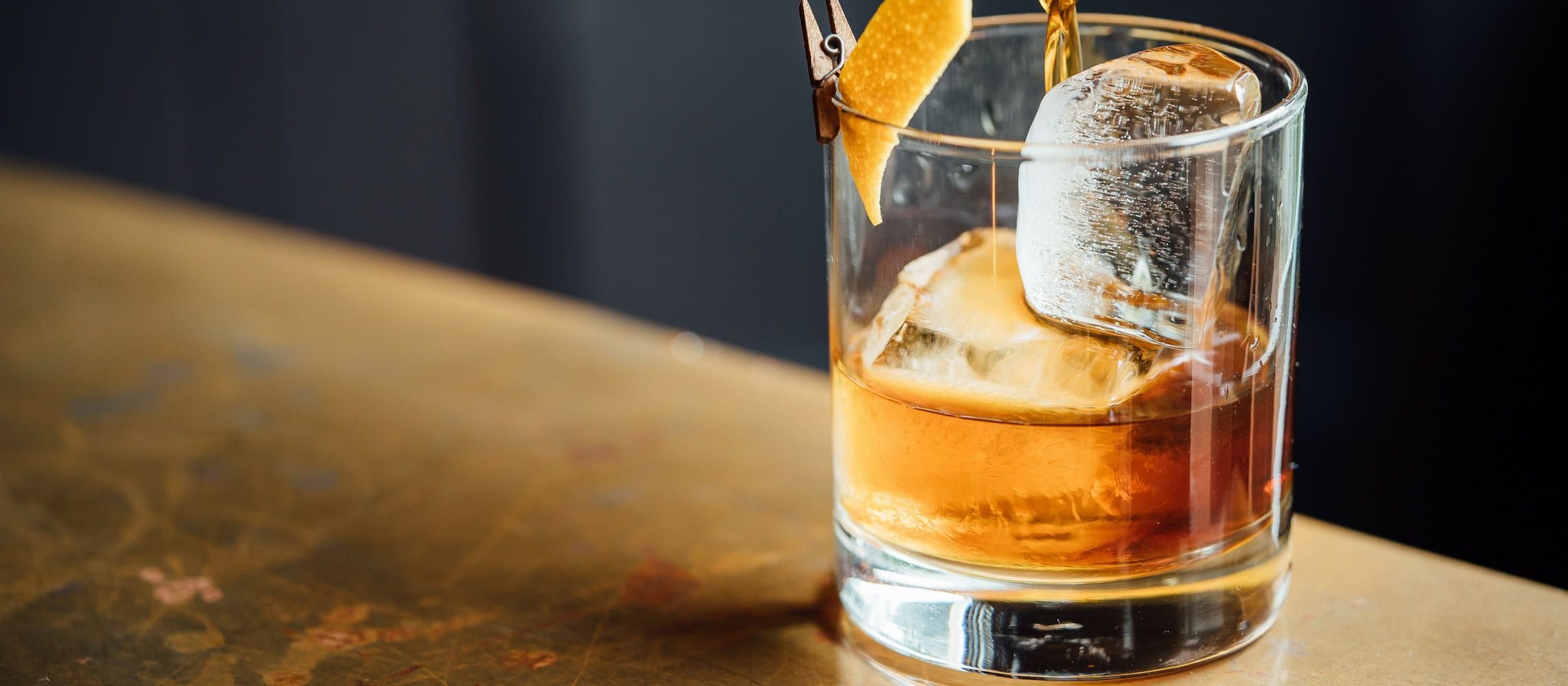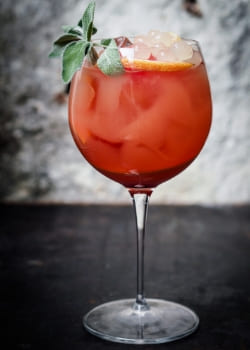Super Early Deadline
30 November 2025
Judging
Date
24 & 25 March 2026
Winners Announcement
22 April 2026
30 November 2025
24 & 25 March 2026
22 April 2026

The rise of the cocktail has followed the growth in consumer interest in craft products in general: their provenance, distinctiveness, and innovation. This interest and awareness have driven a sometimes quite remarkable growth in the production of craft alcoholic drinks across the board, whether craft beer and ciders or craft spirit producers.

Gin sales exceeded £1.6 billion in 2018, up an astonishing £500 million in just a year, driven by interest in the range of unique taste profiles that gin can provide, each adding a level of complexity to any number of original cocktail flavor combinations; rum sales passed the £1 billion mark at the same time, headed up by dark, golden and flavored rums, with coconut-flavored rum a favorite cocktail ingredient; tequila sales are up, too, with tequila replacing vodka in a tequila martini, for example; craft vodkas (still the largest-selling white spirit overall) are also up, with new vodkas being produced flavored with botanicals (much like gin), and there’s been considerable growth in craft whiskeys from the US, Japan, and Ireland, some now being ‘speed-aged’ with the barrels traveling on-board ships to increase the liquid’s contact with the barrel sides, much like Linie Aquavit, or through secondary finishes to change flavour profiles using port, rum and sherry barrels: we shouldn’t forget that whiskey-based cocktails still top the most consumed cocktails anywhere in the world; whilst cognac sales, one of the original craft spirits (Scotch whiskey being the other), have achieved their fourth consecutive year of growth, with over 205 million bottles being exported (where would a Sidecar or a classic Champagne cocktail be without brandy?). And don’t let’s forget vermouth, a classic cocktail ingredient, now forecast to reach £14 billion, with growth driven with the addition of new botanicals and other flavorings.
Interest in craft spirits goes further: such as with mezcal, a spirit made from Mexican agave, similar to tequila, but ‘smokier’ in flavor, which is becoming a mixologist favorite because of its serious aromatic complexity; or cachaça, a sugarcane brandy from Brazil that’s similar to rum: un-aged it has a grassy taste, more akin to a French Rhum Agricole or a Bianco tequila, but gains a spicy, dried-fruit complexity when aged; or shōchū from Japan, distilled from rice, barley, buckwheat and sweet potato, which is ‘vodka-like’, but with greater character.
Whilst liqueurs have been included in cocktails since forever, lesser-known liqueurs, like pisco, a grape-based liqueur from Peru and Chile, are becoming more and more popular, as they become better known, and are starting to replace more traditional bases in classic cocktails, even those with a more botanical edge.
Another driver for cocktail growth has been the rise of ‘made-for-Instagram’ (the so-called ‘drinkstagram’) cocktail that looks the most appealing for posting on social media and this, in turn, has driven an interest in all the other ingredients that go into creating a cocktail, a tendency that’s boosted by research showing that nearly two thirds of consumers are willing to experiment in terms of their drinks repertoire. All these trends also embrace the low and non-alcoholic cocktail, underpinned by a marked increase in consumer awareness of health and wellbeing, with 80% of the bartenders now saying they will incorporate more non-alcoholic options on their cocktail lists.
Non-alcoholic cocktails (‘mocktails’) don’t have to be any less flavorsome than their alcoholic counterparts either, even if they don’t have the same ‘mouth feel’, the description used to describe the particular taste profile that alcohol brings to a drink.
Salty, savory cocktails are bang on trend and the dividing line between food and drink is becoming more blurred. For instance, there are cheese and pepper martinis and gin cocktails with cucumber, mint, Greek yogurt and lemon. The classic, savory tomato juice can receive a real boost by adding carrot, beetroot or butternut squash juice, or spices such as turmeric, and even steak seasoning. Leave out the Tabasco and Worcester sauce and replace with clam juice, or add a good vodka to create a Bloody Caesar (this clam juice concoction is Canada’s biggest selling cocktail). Or simply replace Tabasco with horseradish.
Experimentation is the name of the game and a mocktail recipe seen the other day included red onion, coriander, lemon, fennel, and a Seedlip non-alcoholic spirit… other cocktails include tomatillo, not really a tomato at all, but a vegetable with a tart, fruity and slightly herbal flavor… chayote, a type of gourd… fiddleheads, a type of fern, also called a crozier, so-named after the curved staff used by a bishop… jicama, a type of tuber… and Jerusalem artichoke (another tuber, and actually a species of sunflower – the word is a corruption of Girasole, which means sunflower in Italian)… but you can also find cocktails that include special grains, endive, black sapote (a type of persimmon), and the blessed thistle herb as ingredients. Mushrooms, too, are finding their way into cocktails. Seen as a healthy ingredient, mixologists are using mushroom broth or tea (the latter sometimes mixed with sparkling wine) to include in Irish coffee, and also creating a mushroom- and thyme-infused vodka.
On the non-vegetarian side of things are cocktails that have chorizo, anchovies, bone broth, Szechuan peppercorns, beetroot, gravy, and bacon, with influences that come directly from the kitchen in a move to replicate a particular dish.
The country, or national, profiles come into play here too with nearly a quarter of bartenders saying they would use rose and, over a third, turmeric in cocktails, common flavors in North Africa and the Middle East.
Just as there’s been a coming together of food-inspired beverages so, with bars and restaurants borrowing from the coffee category, coffee cocktails have become a popular digestif cocktail: take the Espresso Martini, made with vodka, cold brew coffee, espresso liqueur and nitrogen-charged malt, something that’s used in the manufacture of stouts. Then there’s the Iced Charcoal Latte, a recipe consisting of rum, white cacao, milk, espresso, salted vanilla syrup – and charcoal.
Just in case the this Brave New World of cocktails could be considered extreme, old favorites do still exist in the form of the good old British beer and lemonade shandy, but yes, here too bars are ringing the changes: come the summer, you might come across NO-LO shandies made from a no- or low-alcohol beer, a measure of bourbon whiskey and grapefruit juice, or a no-alcohol recipe from the USA consisting of cream soda, balsamic vinegar, blueberry grenadine and zero-proof blonde beer (neither of which is quite as thirst-quenching as a ‘Rock Shandy’, discovered on a trip to South Africa, and made from craft tonic and / or lemonade and a really good dash of Angostura bitters).
Experimentation is the name of the game and, with consumers looking for new experiences and new and unique tastes, the so-called cocktail revolution shows no signs of slowing up.
Show your spirits where it matters. Get your products tasted by top bartenders, buyers and experts at the London Competitions — enter now.